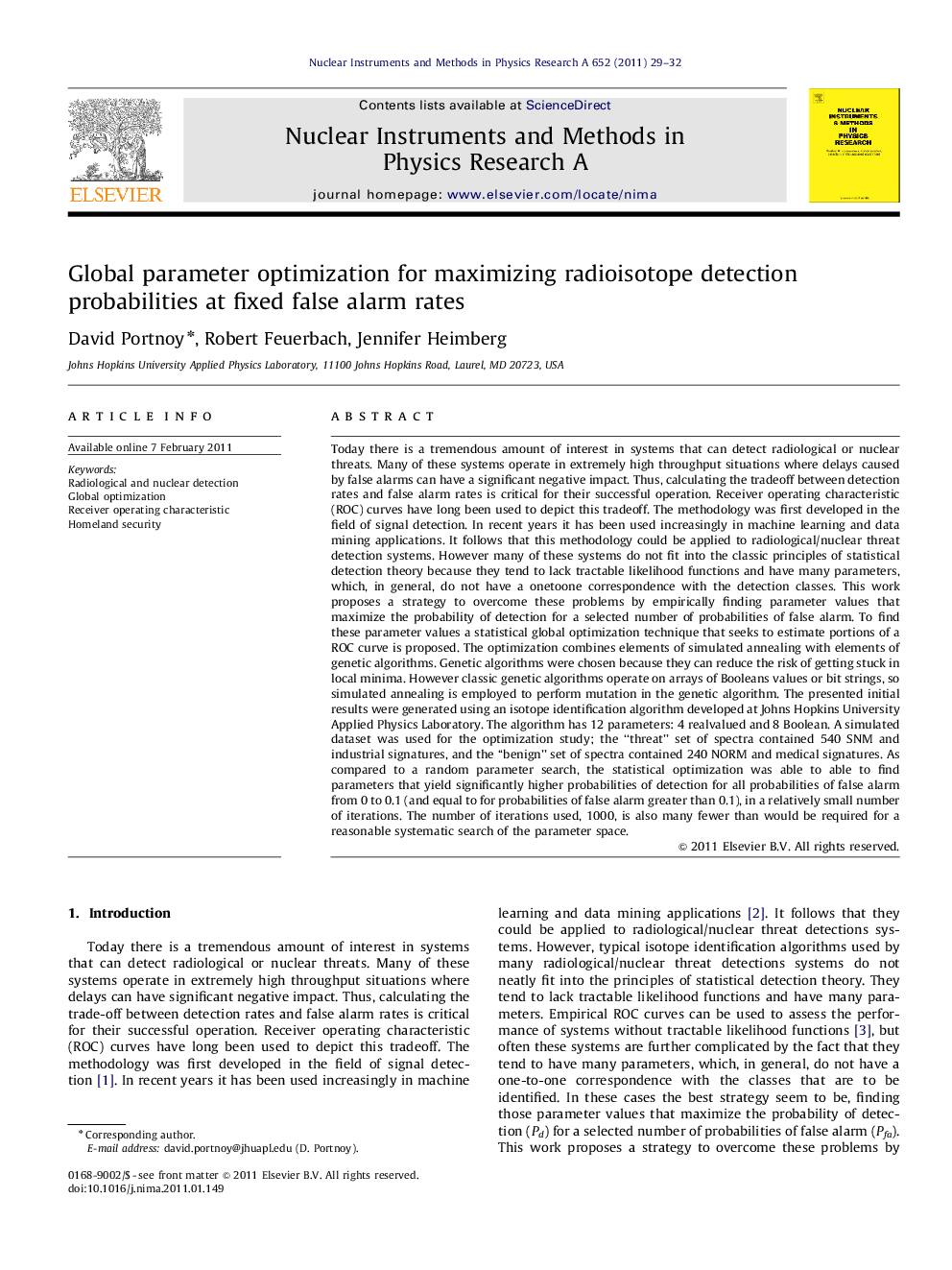| کد مقاله | کد نشریه | سال انتشار | مقاله انگلیسی | نسخه تمام متن |
|---|---|---|---|---|
| 1824606 | 1027342 | 2011 | 4 صفحه PDF | دانلود رایگان |

Today there is a tremendous amount of interest in systems that can detect radiological or nuclear threats. Many of these systems operate in extremely high throughput situations where delays caused by false alarms can have a significant negative impact. Thus, calculating the tradeoff between detection rates and false alarm rates is critical for their successful operation. Receiver operating characteristic (ROC) curves have long been used to depict this tradeoff. The methodology was first developed in the field of signal detection. In recent years it has been used increasingly in machine learning and data mining applications. It follows that this methodology could be applied to radiological/nuclear threat detection systems. However many of these systems do not fit into the classic principles of statistical detection theory because they tend to lack tractable likelihood functions and have many parameters, which, in general, do not have a one‐to‐one correspondence with the detection classes. This work proposes a strategy to overcome these problems by empirically finding parameter values that maximize the probability of detection for a selected number of probabilities of false alarm. To find these parameter values a statistical global optimization technique that seeks to estimate portions of a ROC curve is proposed. The optimization combines elements of simulated annealing with elements of genetic algorithms. Genetic algorithms were chosen because they can reduce the risk of getting stuck in local minima. However classic genetic algorithms operate on arrays of Booleans values or bit strings, so simulated annealing is employed to perform mutation in the genetic algorithm. The presented initial results were generated using an isotope identification algorithm developed at Johns Hopkins University Applied Physics Laboratory. The algorithm has 12 parameters: 4 real‐valued and 8 Boolean. A simulated dataset was used for the optimization study; the “threat” set of spectra contained 540 SNM and industrial signatures, and the “benign” set of spectra contained 240 NORM and medical signatures. As compared to a random parameter search, the statistical optimization was able to able to find parameters that yield significantly higher probabilities of detection for all probabilities of false alarm from 0 to 0.1 (and equal to for probabilities of false alarm greater than 0.1), in a relatively small number of iterations. The number of iterations used, 1000, is also many fewer than would be required for a reasonable systematic search of the parameter space.
Journal: Nuclear Instruments and Methods in Physics Research Section A: Accelerators, Spectrometers, Detectors and Associated Equipment - Volume 652, Issue 1, 1 October 2011, Pages 29–32